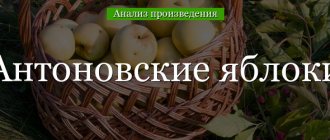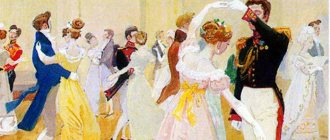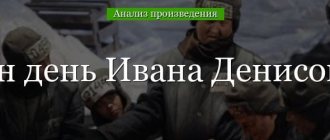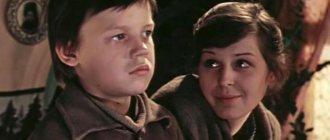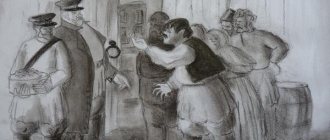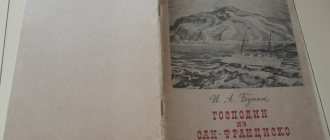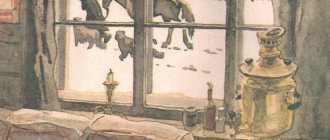Sometimes you want to read something epic, cool, but at the same time useful from the point of view of erudition and self-development. Fortunately, mankind has created many epics, from the Epic of Gilgamesh to the Kalevala, which are full of adventure, swashbuckling plots and amazing characters. I read this and it’s like I spent time reading fantasy again as a child, but at the same time you also have the right to show off your cultural baggage. Complete benefit! We have collected for you 5 epic works that are fascinating reads. Of course, there could be more, so it makes sense to return to this topic one day.
"The Epic of Gilgamesh" Babylonian Conan!
The Epic of Gilgamesh is a Sumerian-Akkadian epic story about a grandiose man named Gilgamesh, who was the king of the city-state of Uruk. But it’s boring for him to rule like that; he’s constantly looking for adventures on his ass. In them, he is helped by his side kick - the yeti biorobot Enkidu, with whom they fight bosses and arrange orgies with beer and beauties.
Then something bad happens, and Gilgamesh turns from a muscular goon into a sophisticated man who is trying to overcome a midlife crisis, and at the same time death itself. He even refuses to sleep with the goddess of love Ishtar - he is so fearless and arrogant. For this, Ishtar promises to send hordes of zombies to Earth. After all, 4,500 years ago people understood that a successful story needed character development, as well as zombies.
Why it's worth reading: an exotic story about a brutal man. Boss fights! One of the best stories about friendship in world literature. Cons: practically none. “Of Gilgamesh” is an ideal read for an hour and a half.
List of literature, 6th grade (moving to sixth grade)
The school curriculum that students will encounter when entering sixth grade consists of works by Russian writers of the 19th and 20th centuries. The most significant in volume in the school extracurricular literature program for the sixth grade was the work of N.G. Garin-Mikhailovsky "Childhood of the Subject".
Required reading:
- Abramov F. A. “Dog Pride”, “What Horses Cry About”;
- Andreev. L.N. “Petka at the Dacha”, “Angel”;
- Astafiev V.P. “Monk in new pants”, “Why did I kill the corncrake?”, “Horse with a pink mane”;
- Garin-Mikhailovsky N.G. "Childhood Topics";
- Gogol N.V. "May Night, or the Drowned Woman";
- Leskov N.S. "Man on the Clock";
- Nekrasov N.A. "Railway";
- Platonov A.P. "Cow";
- Prishvin M.M. “Mysterious box”, “Blue bast shoe”;
- Pushkin A.S. "Dubrovsky";
- Turgenev I.S. Stories from the series “Notes of a Hunter”: “Bezhin Meadow”;
- Chekhov A.P. "Thick and thin";
- Shergin B. “Childhood in Arkhangelsk”, “Misha Laskin”.
List of additional literature:
- Russian folk tales.
- Myths and legends of the peoples of the world.
- Derzhavin G.R. "Swan".
- Aksakov S.A. “Childhood years of Bagrov - grandson”, “Buran”.
- Batyushkov K.N. "On the ruins of a castle in Sweden."
- Davydov D.V. "Partisan".
- Glinka F.N. “You can’t hear the noise of the city,” “The morning is wiser than the evening.”
- Ryleev K.F. "Derzhavin".
- Baratynsky E.A. "Motherland".
- Zhukovsky V. A. “Svetlana.”
- Pushkin A.S. “Groom”, “In the depths of Siberian ores...”, “Shot”, “Undertaker”, “Song of the prophetic Oleg”.
- Gogol N.V. "Terrible Revenge", "Viy".
- Yazykov N.M. “Motherland”, “The Present”, “Two Pictures”.
- Tyutchev F.I. “Dream at Sea”, “Spring”, “How cheerful is the roar of summer storms...”.
- Lermontov M.Yu. “Airship”, “Mermaid”, “Sea Princess”, “Ashik-Kerib”.
- Odoevsky V.F. "Excerpts from Masha's magazine."
- Tolstoy A.K. “Prince Silver.”
- Maikov A.N. "My God! Yesterday there was bad weather...” Haymaking.
- Ostrovsky A.N. "Snow Maiden".
- Koltsov A.V. “Don’t make noise, rye...”, “Forest.”
- Nekrasov N.A. "Vlas", "Grandfather".
- Turgenev I.S. Stories from the series “Notes of a Hunter”: “The Burmister”, “The Singers”, “Khor and Kalinich”.
- Dostoevsky F.M. "The boy at Christ's Christmas tree."
- Tolstoy L.N. "Hadji Murat"
- Leskov N.S. "Lefty", "Stupid Artist".
- Kuprin A.I. “Wonderful Doctor”, “Yu-Yu”, “Emerald”, “White Poodle”.
- Garshin V. M. “The Tale of the Toad and the Rose”, “Signal”.
- Mamin-Sibiryak D. N. Stories.
- Chekhov A.P. “Book of Complaints”, “Boys”, “Burbot”, “Children”, “Horse Name”.
- Cherny S. “The Diary of Fox Mickey.”
- Charskaya L. “The Beginning of Life”, “Princess Javakha”.
- Platonov A.P. “Multi-colored butterfly”, “Unknown flower”.
- Paustovsky K.G. “The Disheveled Sparrow”, “The Last Devil”, “Cat Thief”, “Steel Ring”, “Meshchera Side”.
- Kataev V.P. “Son of the Regiment”, “Electric Machine”.
- Astafiev V.P. "Trees grow for everyone."
- Zheleznikov V.K. “The eccentric from the sixth “B”, “Traveler with luggage”, “Good morning to good people.”
- Likhanov A.A. "The last cold."
- Prishvin M.M. “Ship Thicket”, “Forest Drops”.
- Iskander F. “The Adventures of Chick.”
- Krapivin V.P. “Brother Who’s Seven”, “Stars in the Rain”.
- Yakovlev Yu.A. “Ledum”, “Knight Vasya”, “Boy with Skates”, “But Vorobyov didn’t break the glass.”
- Rasputin V.G. "French lessons".
- Schwartz E.L. "Two maples."
- Rybakov A. “Dagger”, “Bronze Bird”.
- Shukshin V.M. "Exam".
- Bulychev K. “The Adventures of Alice” “The Girl to Whom Nothing Happens”, “Reserve of Fairy Tales”, “Kozlik Ivan Ivanovich”, “One Hundred Years Ahead”.
- Homer "Iliad" (excerpt), "Odyssey" (excerpt).
- According to E. “Oval Portrait”, “Glasses”.
- Hugo V. “Cosette”, “Gavroche”.
- Wild O. “The Canterville Ghost.”
- O.Henry. "The leader of the Redskins".
- Chesterton G. “The Mystery of Father Brown.”
- Verne J. “The Mysterious Island”, “Twenty Thousand Leagues Under the Sea”, “The Children of Captain Grant”.
- Wells G. “The Invisible Man.”
- Carroll L. “Alice in Wonderland”, “Alice Through the Looking Glass”.
- Dodge M. “Silver Skates.”
- Conan Doyle A. “Stories about Sherlock Holmes.”
- Twain M. “A Ghost Story,” “The Adventures of Huckleberry Finn.”
- Saint-Exupery A. “The Little Prince”.
- Bradbury R. Stories.
- White T.H. "Candle in the Wind."
- Irving W. “Ghost Bridegroom.”
- Seton-Thompson E. “Animal Heroes,” “Animal Stories.”
- Ende M. “Endless Book.”
- Farjon E. “The Seventh Princess.”
Grettir's Saga PURE RAGE!
Grettir's Saga is the story of a thug and psychopath with an uncontrollable urge to violence. It may seem that we are talking about a typical Viking, but no. Even the stern Normans, looking at Grettir, were so crazy that they composed an amazing saga about his adventures and atrocities.
Already in adolescence, he begins to kill, and does it casually - like drinking water. As a result, he is expelled from the community, then from the country, and then completely outlawed. That is, virtually anyone has the right to kill him, rob him, and nothing will happen to him for it. But Grettir, it seems, only needs this - the bastard mows down the mercenaries sent to his soul right and left. He also swears a lot, lies blatantly, jokes about his penis, has sex with village women in a geothermal spring, and also pretends to be a berserker. In the end, of course, he is killed, but only with the help of vile witchcraft, so the saga leaves us with many moral questions. Is it possible to overcome evil (that is, Grettir) with another evil (that is, magic)? Is he a villain or an anti-hero? This is, in general, a Scandinavian Deadpool.
Why it's worth reading: a bloody story about a rare scoundrel, a Nordic spirit and fights worse than in "Block 99". Cons: slightly complex style and difficult to remember Scandinavian names.
Epic epics grettir
Specifics of studying epic works
Introduction.
Epic works form a significant part of the school curriculum. Thus, in the curriculum “Literature. 5th grade" edited by V.Ya. Korovina, 63% of class time is allocated to the study of prose works, while lyrics take 18%, drama - 3%. The purpose of this work is to determine the specifics of studying epic works in grades 5–7. This leads to the following tasks: 1) analyze theoretical and methodological sources on the issue under study; 2) analyze the textbooks and curricula used in modern school practice using the example of the systems of literature lessons presented in them based on the story of L.N. Tolstoy “Prisoner of the Caucasus” (grade 5); 3) present lesson notes on this topic.
Specifics of studying epic works in grades 5-7
Epic works form a significant part of the school curriculum. The epic is presented in school in a variety of genres: fable, short story, novel, epic. But genre differences should not be eliminated when studying what is common to the essence of the epic genre of literature - its narration and ability to embrace life in its objective completeness. This feature of epic works affects the goals, ways and methods of working on them in school. When studying them, attention will inevitably be concentrated on those components of the literary text that are essential for the epic genre. In a school setting, they usually turn out to be:
1. Theme, issues, plot. Looking at them, students comprehend the work as an aesthetic reality, as a transformed reality.
2. Images of heroes (by getting to know them, students comprehend the diversity of human characters and types).
3. The author as a creator, as the creator of the special artistic world of a given work.
At different stages of learning, not all components will be in the student’s field of view, and in general, the completeness of the analysis of large epic works is unattainable at school. Therefore, it is important in each case to look for the main lines, the dominants of analysis, through which the student would go to understand the ideological and artistic meaning of the work at a level accessible to his age. The choice of these lines is determined by the age of the students, the complexity of the work, and its genre. When searching for or choosing an interpretation of a work in school, the psychological aspect is also taken into account - the need to arouse the interest of students, their need for active participation when working with the text. Therefore, it is so important for the teacher to know the students’ opinions about the work and to take into account their perceptions. As a rule, the teacher focuses the students’ attention on that content layer of the work that was difficult for them to access when reading independently.
In the lessons of studying the story of L.N. Tolstoy “Prisoner of the Caucasus” These could be the following episodes: “In the village”,
a fragment in which Dina tries to knock down the prisoner’s block, “Zhilin on the Mountain”, Zhilin and Dina at the moment of parting.
It is important to teach students to be aware of impressions and understand the author's intention. Therefore, the main attention is paid to the selection of material, placing emphasis in the work on it: 1) which episodes to consider in detail, which ones to omit, 2) what to highlight as the main thing in the character of the hero, 3) how to approach the author’s position, 4) what to emphasize.
When analyzing, special attention must be paid to: 1) analyzing the plot and compositional basis of the work, 2) working on images, 3) identifying the author’s position and the originality of the poetics of the work.
Analysis of plot and composition should begin in 5th grade. Schoolchildren should perceive the plot as events arranged in a certain sequence, composition - the arrangement of events, the interaction of images. To analyze the plot and composition, you need to use the following techniques: 1) reading and re-reading individual fragments of the text 2) drawing up plans 3) retelling 4) titling parts of the work 5) analyzing episodes of the work.
Analysis of an episode occupies a special place in the school study of epic works, both in terms of its significance and the complexity of its implementation. Mastering the plot-compositional basis and artistic world of a work is done by working on its individual parts: chapters, episodes .
In this case, you need to strive to ensure that the entire work is present in the highlighted part. An episode is always a link in an event chain. Each of them is connected to the others. In middle grades, when analyzing them, events often come to the fore; in older grades, heroes and the author’s position are more important. So that the episode does not obscure the entire work and so that it does not crumble in the minds of the students into an unrelated chain of episodes, it is necessary, firstly, to strictly select them for detailed analysis, secondly, to constantly connect the part and the whole, the episode and the entire work, thirdly , vary the methods of analysis when considering different episodes of one work. Let us keep in mind that the same scene can be turned towards the student with different sides depending on which path of analysis it is included in.
In the lessons of studying the story of L.N. Tolstoy “Prisoner of the Caucasus,” the ransom situation can be considered both with a comparative description of Zhilin and Kostylin (they behave differently) and with the characteristics of the highlanders (their attitude towards Zhilin changes).
When working on an episode, we must strive to preserve the students’ emotional attitude towards the characters and events. It is necessary to provide tasks that would create a mindset for an emotional response and would help the students’ experiences to manifest themselves. The most typical of tasks of this kind are the following: preparing students for expressive reading of an episode as a whole or its fragments, as well as the reading itself in person, for example, of a dialogue.
No less than the events of the story, the reader loves to follow the actions of the characters, the destinies of the heroes. A literary hero is one of those artistic realities without which it is impossible to understand either the world of the work or the author’s position. Creating an image of a person, the writer explores him “as a whole personality” - in the unity of mental, emotional and physical qualities. Therefore, it is difficult to recognize as legitimate the long-standing practice in school of identifying the “traits” of a hero and drawing up his summary characteristics. This approach to the image is destructive for him. A much more appropriate way of studying is when the character’s behavior is considered in unity with the action. For studying at school, it is especially important that the character always carries the author’s ethical assessment and thereby helps readers develop value orientations.
In different classes, the process of getting to know a literary hero cannot be the same, since schoolchildren of different ages and different literary preparedness will master the image each time. It is known that students of IV-VI, and sometimes VII-VIII grades see living people in literary heroes. To support this “similarity effect,” methodologists recommend constantly identifying the reader’s impression of the character. In this regard, it is useful to encourage children to motivate the behavior of heroes.
When studying L.N. Tolstoy’s story “Prisoner of the Caucasus,” the following questions can serve this purpose:
*
How would you feel in Zhilin’s place towards a person like Kostylin?
* What can you advise a person like Kostylin to learn not to give up and overcome themselves? * What qualities of Zhilin’s character would you like to have?
In high school, it is not so much the behavior that is motivated and explained as the moral position of the hero, his psychology.
Different aspects of the hero's personality and behavior are perfectly revealed by comparing the character with another character in a similar situation.
In the system of lessons for studying the story of L.N. Tolstoy “Prisoner of the Caucasus”, with a comparative description of Zhilin and Kostylin, it is appropriate to make this comparison according to the following plan, for example:
1. Portrait of a hero. 2. Characteristics. 3. Attitude to loved ones, others, the world. 4. The attitude of others towards him. 5. Behavior in captivity. 6. The author’s attitude towards the hero. "Talking" surname. 7. Conclusion about the hero’s life position and his role in the work.
Such work orients schoolchildren to perceive the depicted human character and correlate it with their own life experience and their own ideals. Gradually, one should cultivate the ability for such perception, when a second layer of understanding is built on top of the primary layer of understanding (the hero is a person): this is an image created by the artist’s imagination and expressing the author’s idea. The older schoolchildren become, the more deeply the author’s position in relation to the character is comprehended, and it should become the most important argument in the classroom in disputes about whether the hero is right or wrong. In the 7th grade and especially in high school, questions about the author's position when considering the image of the hero become constant (the author's plan, the author's concept of character are analyzed). As a result, high school students acquire the ability to perceive the hero both in his real content (as a person) and in his artistic content (as a creation of the author, carrying an idea). A big role here belongs to generalizing moments; they are present in the work on a character both when he is observed in a specific situation, and when the student is asked to motivate his attitude towards the hero. In high school, at the generalizing stage, tasks of a problematic nature are advisable, orienting the student towards the searching nature of the activity.
There is another important aspect to working on the image of a literary hero: in the process of observations, assessments, and generalizations, the student becomes aware of the techniques for creating an image-character and gradually masters the ability to independently analyze it. M.A. Rybnikova wrote: “In an epic work, a character is an actor, he drives the action. Events befall him, he is the subject of statements about him by the author and other characters, he is surrounded by the situation, nature, he speaks out about what is happening, and these statements of his are characteristic both in content and language” [2, p. 112].
This means that when perceiving a hero holistically, you need to see his portrait, relationships with other characters, actions, speech, landscape sketches, etc.
It is not only not necessary, but also harmful when working on each character to “fix” the entire system of techniques, but it is necessary to teach schoolchildren to recognize them.
In the lessons of studying the story of L.N. Tolstoy “Prisoner of the Caucasus”,
work is carried out with the following concepts: artistic image, characterization of the hero, true story, portrait, characterization of the hero, inner speech of the hero, landscape, etc.
By introducing these terms during the conversation, the teacher teaches students to pay attention to those components of the text that create the image of the hero. Schoolchildren's ideas are gradually systematized, and they learn to see, for example, the role of a psychological portrait in creating the character of a hero or the reflection in the speech of a character in the artistic system of works by different authors become the main angles of analysis.
You cannot fully perceive an epic work if you do not see the author’s position in it. When students do not understand artistic conventions and liken a work to reality, they ignore the role of the author. True, even fourth- and fifth-graders know that there is a writer Pushkin, Kataev, Prishvin, who wrote the stories that are read in class. However, most often teenagers seem to separate the author from the work and do not know how to see his “presence” in the text. Therefore, this must be taught. It is quite possible to show already in grades IV-V that Turgenev (the author) makes us sympathize with Gerasim and condemn the lady, and Prishvin infects us with the desire to discover her “living soul” in nature, etc. It is necessary to draw the attention of schoolchildren to the intonation of the narrative, to the figurative and expressive means of language with which the writer conveys his assessment of what is happening. This forms in them the habit of following not only the events in the work, but the author’s thought, and seeing the literary characters of the author who created them. Then this concept begins to become more complicated: in the 7th grade, students become acquainted with a character posing as the author of a work - this is the narrator on whose behalf the story is told. Starting from the 8th grade, schoolchildren develop a more complex idea of the author as a person who creates a special artistic world, thereby expressing their understanding of life and their assessment of it.
The curriculum does not require theoretically acquainting students with the forms of expression of the author's consciousness in epic works, but it is necessary to teach them to see this consciousness itself. First, you should ensure that students see and imagine the picture or the mood that is born under the influence of the author’s description of nature. Sketches of it always differ in the nature of the writer’s vision, in the place it occupies in a story, novel or short story, in the richness of associations with which the artist connects it with human life. Therefore, working on the landscape turns out to be an essential moment in comprehending the author’s concept of life, in understanding the author’s position.
In L.N. Tolstoy’s story “Prisoner of the Caucasus,”
the episode “Zhilin on the Mountain” is analyzed.
The hero observes the magical beauty of the Caucasus, but yearns for the pictures of Russian nature that are close to his heart. Thus, works of the epic kind are considered at school from many points of view, incorporating work on different components of the literary text. In order to comprehensively and meaningfully analyze stories, novels, and novels with schoolchildren, it is useful to remember the words of M.A. Rybnikova: “We are working along many lines, but these lines cannot be maintained equally everywhere. Sometimes attention to the plot displaces attention to the character, sometimes we take one hero, and sometimes we characterize them side by side and comparatively; sometimes, taking up the language, we talk about comparison, other times about epithets... so we go through all the keys of our huge keyboard, touching first one place, then another, with the expectation of gradually mobilizing all the questions we need and all the necessary methods of working on mastering the work "[2, p. 187].
A system of lessons based on L.N. Tolstoy’s story “Prisoner of the Caucasus” in the 5th grade.
The system of lessons based on the story of Leo Tolstoy “Prisoner of the Caucasus” is presented in almost all school literature programs in the 5th grade. The exception is the program edited by R.N. Buneev. The study of this work is allocated from three (Work program edited by V.Ya. Korovina) to five lessons (Work program edited by G.I. Belenky). With different approaches to studying the story, the programs also contain common points. This is the presence of analysis of plot and composition. Thus, in the system of lessons proposed by the team led by V.Ya. Korovina [1, pp. 30-32], already in the first lesson “L.N. Tolstoy. A Word about the Writer” the expected results are: to be able to perceive and analyze the text, to determine the genre of a literary work, to formulate the idea and problems of the work. Observation of the plot and issues is organized in lessons developed by the program edited by V.F. Chertov [4]. A separate lesson “About the plot and characters”, dedicated to working with a theoretical and literary article, is highlighted in the program edited by G.I. Belenky [5]. Also, all authors included the topic “Zhilin and Kostylin” in the lesson system. In the program edited by V.Ya. Korovina, this topic is studied in the system of speech development lessons. Goal: teaching comparative characteristics of heroes and preparing for the essay “Zhilin and Kostylin: different destinies.” In the program edited by G.I. Belenky, in a lesson on this topic, comparative characterization of characters based on visual means is also taught. In the program edited by V.F. Chertov, the tasks are almost the same: to develop initial skills in comparative characteristics of literary heroes; show, using the example of analyzing the images of Zhilin and Kostylin, two different attitudes to life. The authors believe that this path will help guide students to understanding the moral issues of the story and its ideas. A similar focus on understanding the life positions of characters with access to the artistic idea of the story distinguishes the program edited by G.S. Merkin [3].
Analysis of the programs made it possible to see different ways and approaches to working with prose in literature lessons based on the story of L.N. Tolstoy. Thus, V.Ya. Korovina considers the idea of the story to be the starting point for the analysis of the work, proposing the following formulation of the theme: “Prisoner of the Caucasus” as a protest against national enmity.” G.I. Belenky, in his analysis of the work, focuses on the important role of descriptions in its structure: descriptions of the nature of the Caucasus, descriptions of villages and dwellings that recreate the customs and morals of the highlanders. Detailed work on the descriptions allows students to logically lead to an understanding of one of the most important problems - the problem of the relationship between captured officers and highlanders. For a more careful reading of the text during a speech development lesson, V.F. Chertov suggests working on drawing up a quotation plan.
When developing the lessons, the system of lessons for studying the story of L.N. Tolstoy “Prisoner of the Caucasus”, proposed in the textbook by V.F. Chertov, was taken as a basis [4].
Lesson notes on literature
the story of L.N. Tolstoy “Prisoner of the Caucasus” in the 5th grade.
Lesson 1.
Topic: “The story of L. N. Tolstoy “Prisoner of the Caucasus.”
Objectives: 1) educational -
continue to familiarize students with the works of L. N. Tolstoy; introduce students to the facts of the writer’s biography related to the war in the Caucasus, to the history of the creation of the story; reveal the content of basic concepts and terms, teach them to operate when analyzing a prose work; begin preparations for understanding the problems of the story and the author’s position.
2 )
developing -
to develop the culture of reader perception of the text, oral and written speech, the ability to determine the author's position.
3) raising –
to form a humanistic worldview, national self-knowledge and civic position.
Lesson type:
lesson of learning new material.
Main activities:
reading the introductory article;
answers to textbook questions; oral word drawing; miniature essay; reading fragments of the story. Terms:
true story, portrait, characterization of the hero, inner speech of the hero, landscape.
Equipment:
portrait of Leo Tolstoy from the Caucasian period of his life.
Lesson steps
I. Introductory speech by the teacher about L.N. Tolstoy, a story about Yasnaya Polyana, the writer’s small homeland, presentation of slides with views of Yasnaya Polyana. II. Reading and discussion of the introductory article about the writer. First, read the first part of the article (before the words “The writer’s youth was spent in Kazan”). Fifth-graders recall the fables, fairy tales, and stories of L.N. Tolstoy studied in elementary school (“Filippok,” “Shark,” “Jump,” “Bone,” “The Lion and the Dog,” etc.). Questions for conversation: 1. What new works of the writer did you learn about from the article? 2. Where did the writer spend his childhood and most of his life? 3. Recreate a picture of the Yasnaya Polyana estate (draw a verbal image of the estate). You can invite fifth-graders to write a short miniature essay on a topic formulated in the form of a quote: “Happy, happy time of childhood!” (L.N. Tolstoy). Continue reading the textbook article. Then a short conversation is held about the types and areas of activity that determined the life of L. N. Tolstoy. III. Reading and commenting on the story. After reading the first chapter, you should have a short conversation that reveals the level of perception and understanding of the text, relating mainly to questions about the time and place of action, the events depicted in the story. In addition, it is important to interest fifth graders (especially those who have not yet read the story to the end). After the conversation, you need to refer to the comments placed after the text of the story. Additional Information:
Additional Information:
“Under Peter I, a defensive line was created along the Terek (a river in the Caucasus) against attacks by the highlanders. There were villages, cordons, and fortresses here. In the second half of the 19th century, there was a war in the Caucasus. In April 1851, a 22-year-old young man, Tolstoy left with his older brother to serve as an artillery officer in the Caucasus. Here the writer saw the war and people at war, was shocked by the different attitudes of people towards themselves, those around them, what was happening to them, amazed by the beauty of nature, the unusualness of the highlanders, their way of life, way of life, habits, songs.”
IV. Conversation on textbook questions about the historical basis of the story, its plot and characters, main episodes: 1. Where does the story take place? 2. What is Tolstoy talking about? 3. What events form the basis of the plot of the story? Name the main episodes. The attention of fifth-graders is drawn to the title complex and the author's indication that this is a true story. V. Reading descriptions of Caucasian nature in the story “Prisoner of the Caucasus”, presenting illustrations for the story. It is possible to refer to the drawings of M. Yu. Lermontov “View of the Cross Mountain from the gorge near Kobi”, “Georgian Military Road near Mtskheta”. Students are invited to draw their own illustrations for the story and choose titles for them. VI. Homework: finish reading the story “Prisoner of the Caucasus” and make a quotation plan for it. Individual assignments: complete individual assignments 1, 2, 4 of the textbook (students' choice).
Lesson 2.
Topic: “Images of the Highlanders. The writer’s thought about friendship of different peoples as a natural law of human life.”
Objectives: 1) educational -
consider the means of revealing the images of the mountaineers in the story; reveal the meaning of presenting to the reader detailed descriptions of the life and traditions of the mountaineers.
2 )
developing -
to develop the culture of reader perception of the text, oral and written speech, the ability to determine the author's position.
3) raising –
to form a humanistic worldview, national self-knowledge and civic position.
Lesson type:
a lesson in the integrated application of knowledge.
Main activities:
reading fragments of a story;
answers to textbook questions; presentation of illustrations for the story. Terms:
collective image, landscape.
Equipment:
drawings by M. Yu. Lermontov “View of the Cross Mountain from the gorge near Kobi”, “Georgian Military Road near Mtskheta”.
Lesson steps
I. Checking homework (quoted outline of the story, verbal portraits of Zhilin, Kostylin and Dina) will prepare students for oral stories about the main characters. II. Reading and analysis of the fragment “In the village” (from the words “We arrived in the village...”) and other descriptions of the everyday life of the Tatars. Additional questions for conversation: 1. Think about why Zhilin couldn’t sleep. Why does Zhilin constantly observe the life of the Tatars? 2. What unusual does Zhilin see in the life and everyday life of the Tatars? 3. What is the difference between Russian and Tatar cultures? How is this difference shown in the story? 4. How do the Tatars feel about Zhilin and Kostylin? How do heroes behave in a ransom situation? Think about how and why the attitude of the Tatars towards Zhilin is changing. III. The analysis of the images of the mountain people should be preceded by an explanation of the meaning of the word “highlanders” (“highlander”, “mountain woman”) - inhabitants of the mountains. The selection of material on the topics “Life of the Tatar village”, “Life and traditions of the Tatars”, “National clothing of the highlanders”, “Dina” will help to begin a discussion of question 6 of the textbook - about the image of the Tatar village, questions 9-10 - about the image of Dina, question 11 - about the image of an old Tatar man. IV. A brief independent description (oral or written) by students of one of the highlanders, for example Abdul-Murat (hard-working, hospitable, economical, caring for the well-being of his family, able to understand and appreciate a good person), an old Tatar who lost his children (strong character, strong-willed person , suffered a lot, he is respected by those around him, ready to accept the death of his children and find strength for life, irreconcilability towards the enemy, love for his land), Dina (kind, caring, responds to a kind attitude, open to love and to participation in the fate of a Russian prisoner, spontaneous, capable of self-sacrifice, strives to help Zhilin, save him). V. Checking homework (individual assignment 2 textbooks). Here it is also possible to compare two descriptions, the native landscape and the Caucasian nature, in the episode “Zhilin on the Mountain” (task 12 of the textbook). The hero observes the magical beauty of the Caucasus, but yearns for the pictures of Russian nature that are close to his heart.
VI. Reading and analysis of episodes dedicated to Zhilin and Dina, discussion of questions 9, 10 of the textbook. Additional questions: 1. Why does Dina help Zhilin? How does Zhilin endear him to the owner’s daughter? 2. Why did Dina become attached to Zhilin, and not to his comrade in misfortune? 3. What risks does Dina take? Remember the story of one of the old man's sons. 4. How does Dina make you feel? 5. How did the attitude of the Tatars towards captives change after the escape? Pay attention to the alternation of motives of enmity and harmony in the story (the battle scene, the farewell of the Tatars to the dead - the horror of war; Zilina’s help to the highlanders, the making of dolls - the motive of agreement). 6. What is the reason that Dina does not change her attitude towards Zhilin, but, on the contrary, worries about him even more? 7. Find the fragment in which Dina is trying to knock down the captive's block. How did she feel at that moment? 8. Why does Dina tell Zhilin about the pressure the old people put on her father? Please note that at the time of this conversation with Zhilin, Dina refuses the toys made for her. Why does Tolstoy write about this? Hero dolls are a symbol of peace, hearth, comfort, family. Students are led to the idea that the world of a child is alien to national strife and far from hostility, profit, and war. Agreement becomes possible between the Tatars and Zhilin; mutual sympathy and friendship arise between Zhilin and Dina. After discussing question 15 of the textbook, we should dwell on the problem of mercy and cruelty in military operations. The fate of the old Tatar man, who lost his sons, will largely help explain the cruelty of the Tatars towards captives. However, in war conditions this is understandable cruelty. VII. Generalization and summary of the lesson. Two Russian officers find themselves in a hostile environment. However, the Tatar village is not a military camp, but a center of peaceful life. Tatars observe customs, love their children and wives. The touching image of Dina, who decided to take a desperate act in the name of saving a good man, embodies the idea of reconciliation, harmony, and brotherhood. The writer emphasizes the unnaturalness of war. VIII. Homework: 1) re-read the last chapter of the story “Prisoner of the Caucasus”; 2) prepare a retelling of an episode of the story from the perspective of one of the characters (Zhilin, Kostylin, Dina). Individual task: compose a film script for “Zhilin and Dina”, highlight the main episodes, present one of them (background, portrait, dialogue), when talking about this fragment, use the phrases “in the foreground”, “in the background”, “in (this creative task can be performed in a group).
Lesson 3.
Topic: “Images of Zhilin and Kostylin.”
Objectives: 1) educational -
to develop initial skills in comparative characteristics of literary heroes;
teach to see in the text a means of revealing the characters of the characters and identify their role in the artistic fabric of the work. 2 ) developing -
to develop the culture of reader perception of a literary text, imaginative and analytical thinking.
3) raising –
show, using the example of analyzing the images of Zhilin and Kostylin, two different attitudes to life; lead students to understand the moral issues of the story and its ideas.
Lesson type:
a lesson in the integrated application of knowledge.
Main activities:
retelling from the perspective of one of the characters;
comparative characteristics of images; literary game, answers to textbook questions. Terms:
artistic image, characterization of the hero.
Lesson steps
I. Checking homework: 1) creative retelling of an episode of a story from the perspective of one of the characters (Zhilin, Kostylin, Dina); 2) presentation of the film script “Zhilin and Dina” (individual task). II. Comparative characteristics of Zhilin and Kostylin according to the following approximate plan, which can be written down in a notebook: 1. Portrait of a hero. 2. Characteristics. 3. Attitude to loved ones, others, the world. 4. The attitude of others towards him. 5. Behavior in captivity. 6. The author’s attitude towards the hero. "Talking" surname. 7. Conclusion about the hero’s life position and his role in the work. Questions 13-16 of the textbook will help you dwell on the problem of the different destinies of the heroes and approach the consideration of the moral issues of the story. Additional questions are possible: 1. Why were the heroes captured? 2. How does Zhilin relate to Kostylin? 3. How does Kostylin behave towards Zhilin? 4. What is the reason for Kostylin’s behavior? 5. Why does Zhilin persuade Kostylin to run away together? 6. Prove that Zhilin, even showing cowardice (“So I’ll leave alone, goodbye…”; “And the devil dared me to take this deck with me. I would have left long ago…”), repents and finds strength in himself, so as not to abandon a friend.
7. What feelings do Zhilin, Kostylin, Dina evoke in you? 8. How would you feel in Zhilin’s place towards a person like Kostylin? 9. What are the similarities between the positions of Dina and Zhilin in the story? 10. What feelings do Zhilin and Dina experience at the moment of separation? How does this episode reveal the characters? What role does the scene of the characters’ separation play in understanding the writer’s intentions and the idea of the work? III. A literary game using cards will activate fifth-graders’ work with text and will help in creating an oral (or written) characterization of a character. The teacher prepares cards that indicate some of the character traits of Zhilin and Kostylin. The cards are shuffled. Students need to comment on what is noted on the cards they received, using examples (quotes) from the text to support their arguments. The completeness and correct construction of the answer, the successful selection of examples from the text for argumentation and conclusion are assessed. Zhilin: Card 1. Good. Card 2. Mother loves. Card 3. Hard worker. Card 4. Believes in himself. Card 5. Has a strong character. Card 6. Decisive. Card 7. Reliable. Card 8. Brave. Kostylin: Card 1. Thinks only of himself. Card 2. Selfish. Card 3. Indifferent to others. Card 4. Weak in spirit and physically. Card 5. Gives in to life's difficulties. Card 6. Pampered. Card 7. Cowardly. Card 8. Not independent. At the end of the work, it is necessary to conclude that the two main characters are clearly opposed to each other. When characterizing them, antonym words are often used, which in a work of art usually confirm the presence of the antithesis device (at this stage of the work it is also possible to introduce the term “antithesis” and explain its origin). IV. Discussion of the meaning of the title of the story, which can be guided by the following questions: 1. Captive - a person who is in captivity. What image and what associations do you have when you pronounce the title of L. N. Tolstoy’s story? 2. Which of the heroes is more like a Caucasian prisoner and why? 3. Pay attention to the writer’s use of the word “prisoner” in the singular. How can this be explained? 4. Why is Kostylin unable to escape from captivity? How does this characterize his position in life? 5. What is the instructive meaning of the story? How does the title of the story reveal the author’s attitude towards the characters? 6. What can you advise a person like Kostylin to learn not to give up and overcome themselves? 7. What qualities of Zhilin’s character would you like to have? V. Homework: prepare a quotation plan for characterizing one of the characters
Lesson 4.
Topic: “Final lesson. Analysis of students' written work."
Objectives: 1) educational -
consolidate the skills of oral and written characterization of the title image of a literary work.
2 )
developing -
to develop a culture of reader perception of text, oral and written speech, the ability to analyze someone else's oral or written statement.
3) raising –
to form a humanistic worldview, national self-knowledge and civic position.
Lesson type:
speech development lesson.
Main activities:
oral stories about a literary character;
analysis of written work. Terms:
conclusion, thesis, quotation.
Lesson steps
I. Presentation of the topic of the lesson and its main goals. We should once again dwell on the requirements for oral and written answers to questions and the stages of preparation for written work. II. Collective work on a written answer to a question using citations. Sample questions: 1. Why does Zhilin invite Kostylin to run away together? 2. What qualities of Kostylin distinguish him from Zhilin? 3. Why is interaction and agreement between Zhilin and the Tatars possible? It is important to draw students' attention to the question word in the task; invite them to give their answer to the question orally (or in writing); ask to write down the main idea (conclusion); remind you of the need to select, if possible, a quotation for each thesis of the main part of the answer. Along the way, the rules for formatting a quotation in the text of the work are established, the need to comment on the quotation and its explanation is spoken of, and the conclusion is reminded that the conclusion is mandatory. Together with the teacher, an introduction is drawn up (introduction of the hero and the work, description of the situation or problem that will be discussed). The conclusion is prepared by students independently, after which its possible options are discussed, and the most successful ones are selected. The most interesting written works can be read out, highlighting among them the most original in content and conclusions drawn in them.
List of used literature
1. Work programs on literature. Grades 5-9 (according to the floor program edited by V.Ya. Korovina): Methodological manual. – M.: Globus, 2009. – 269 p.
2. Rybnikova M.A. Essays on the methodology of literary reading. - M.: Education, 1963. - 315 p.
3. UMK “Literature by G. Merkin. 5th grade.
4. Literature lessons. 5th grade: Methodological guide to the textbook by Chertov V.F.
5. Textbook. Literature. 5th grade: textbook-reader for educational institutions in 4 parts / edited by G.I. Belenky. – M,: Mnemosyne, 2008.
6. Textbook. Literature. Beginner course. 5th grade/comp. Snezhnevskaya M.A., Khrenova O.M. – M.: Mnemosyne, 2011.
7. www.superinf.ru Methods of teaching literature at school (course of lectures).
24
“The Rape of the Bull from Cualnge” The Adventures of the “Irish Hercules” - Cuchulainn
The Rape of the Bull of Cualnge is an epic created by the Irish in the early Middle Ages, so there's a lot of Celtic exoticism and sweeping prowess here. If you describe the plot in one sentence, then a bunch of people are fighting because they cannot divide the cattle. Sounds like your grandfather's story about an ordinary village fight. In general, this is almost true, but over hundreds of years the story has acquired many fantastic details that make it epic. And most importantly, the hero Cuchulainn shines here - a real rock star of ancient Ireland.
At the age of 7 he was already swinging a sword, at 17 he performed great feats, and at 27, as befits a rock star, he died. The fight for the bull from Cualnge, which is waged by two kingdoms, is only an occasion for the manifestation of the brilliant deeds of Cuchulainn. He single-handedly fights entire armies, taking them on the good old “come one at a time!”, sleeps with warlike warrior maidens, wields an epic spear named Ga-Bolga. In between dispatching armies, he completes Hercules-style quests, pits himself against other heroes, and resists the sexual advances of the goddess of war herself, Morrigan. The story of his death became a symbol of the Irish resistance and was beloved by IRA soldiers. You will love it too!
Why it's worth reading: Cuchulainn is a true rock star of medieval Ireland; Celtic exotica; cool artifacts. Disadvantages: the rather complex language of the epic despite its rather large volume, as well as endless introductions and backstories (oh, those filid storytellers!).
List of literature, 7th grade (moving to the seventh grade)
The school curriculum that students entering seventh grade will encounter is divided into 4 parts:
- Russian folk literature;
- works of Russian writers of the 19th and 20th centuries;
- works of Russian writers of the 20th century (Soviet period);
- classic foreign children's works.
The presented literary works belong to various genres and have different volumes. The most significant in terms of volume in the school extracurricular program in literature for the seventh grade were M. Gorky’s story “Childhood” and N.V. Gogol "Taras Bulba".
Required reading:
- Epics: Ilya Muromets. Sadko;
- Abramov F. “Fatherlessness”, “Grass-ant”;
- Andreev L. “Bite”;
- Bunin I. “Numbers”;
- Gogol N.V. "Taras Bulba";
- Gorky M. “Childhood”, “Old Woman Izergil”;
- Kazakov Y. “Quiet morning”;
- Lermontov M. Yu. “Song about Tsar Ivan Vasilyevich, the young guardsman and the daring merchant Kalashnikov”;
- Likhachev D. “Native Land”;
- Nosov E. “Doll”, “Living Flame”;
- O.Henry. "Gifts of the Magi";
- Aldridge J. “Father and Son”;
- Platonov A. “Yushka”, “Unknown Flower”;
- Pushkin A.S. "Poltava", "Station Agent";
- Saltykov-Shchedrin M.E. "Fairy Tales", "Wild Landowner";
- Tolstoy L.N. “Childhood”;
- Chekhov A.P. “Slut”, “Chameleon”, “Intruder”;
- Shergin B. “For fun.”
List of additional literature:
For children about children
- V. Bogomolov. The story "Ivan";
- L. Panteleev. The story “Lyonka Panteleev”;
- Yu. Nagibin. Story "Echo";
- A. Marshall. The story “I can jump over puddles”;
- R. Pogodin. Stories “Post-War Soup”, “Bread and Salt”, etc.;
- V. Zheleznikov. The story “The Traveler with Luggage”;
- A. Svirsky “Ryzhik”;
- R. Pogodin “How much is debt worth”;
- E. Nosov “Doll”;
- L. Kassil “Conduit and Schwambrania”;
- V. Krapivin “Children of the Blue Flamingo”, “Boy with a Sword”.
About nature and animals
- V. Bianchi. Stories “Odinets”, “Murzik”, “Askyr”, etc.
- G. Troepolsky. The story “White Bim Black Ear”;
- G. Skrebitsky “From the first thawed patches to the first thunderstorm”;
- J. Darrell “My Family and Animals.”
Classics of Russian literature
- A. Kuprin. The story “Sparrow”, “Toy”, “Emerald”, “Terrible Minute”, “Strange Case”, “Friends”, “Someone else’s Bread”, etc.;
- A.P. Chekhov. Stories “Book of Complaints”, “Burbot”, “Vanka”, etc.;
- N. Gogol “Evenings on a farm near Dikanka”, “Taras Bulba”;
- A. Pushkin “Belkin’s Tales”;
- L. Tolstoy “Childhood”.
Classics of foreign literature
- Charles Dickens. Novels “The Adventures of Oliver Twist”, “David Copperfield”;
- S. Bronte. The novel "Jane Eyre";
- V. Scott. The novel "Ivanhoe";
- M. Twain. The novel "The Prince and the Pauper";
- Mayne Reid. Novel "The Headless Horseman";
- L. Pirandello. Novella "Turtle";
- A. Dumas “The Three Musketeers”;
- F. Schiller “William Tell”;
- M. Reed “The Headless Horseman”;
- D. Aldridge “The Last Inch”;
- D. London “Love of Life”;
- P. Merimee "Matteo Falcone".
About the adventures
- A. Belyaev. Novel "Ariel";
- J.Vern. Novels "Mysterious Island";
- I. Efremov. Novel “On the Edge of the Oikumene”;
- F. Cooper. Novel "The Last of the Mohicans";
- G. Wells. Novel "The Invisible Man";
- K. Bulychev. Novel "A Million Adventures";
- R. Bradbury. The story "Rust" and others;
- R. Sabatini “The Odyssey of Captain Blood”;
- W. Scott "Ivanhoe", "Quentin Dorward";
- G. Haggard “King Solomon’s Mines”, “Moctezuma’s Daughter”;
- V. Kaverin “Two Captains”;
- A. Tolstoy “Hyperboloid of Engineer Garin”, “Aelita”;
- O. Henry “The Chief of the Redskins”, “The Trust That Broke”, “Kings and Cabbage”.
“The Song of Roland” Epic and Overpowering
If you're curious about the origins of Warhammer's overflowing pathos, here's one of its main inspirations. “The Song of Roland” is an impossibly pathetic story about Great Duty, Overcome and Holy Wrath. But that’s why it’s cool, everything here is so dashing and simple - here are ours, here are our enemies, here is good, here is evil. Take the sword and destroy evil in the name of the Emperor!
The story tells about the last battle of the mighty (I’m tempted to say “paladin”) named Roland. He is the nephew of Charlemagne, who was unlucky enough to be ambushed by the Moors. Roland and his comrades hold off incredible hordes of enemies, fighting knee-deep in blood, but do not call for help, because they are so hypermasculine and afraid that their beloved emperor might be ambushed. The Song of Roland may look naive, but it has a chivalrous charm. By the way: in the poem the heroes fight the godless Moors, although in reality that same battle in the Roncesval Gorge was fought with the Basque Christians. But for the sake of political propaganda, the authors decided to sacrifice a little authenticity.
Why it's worth reading: pathos in the spirit of Warhammer, an epic battle in detail, a pleasant style of the poem. Cons: a bit cardboard (even for an epic) characters, slightly predictable plot.
Textbooks and teaching materials on literature in 5th grade
The list of references will depend on what program is being taught at school. The Ministry of Science has currently approved three literature programs. They can be identified by the authors of literature textbooks:
- Authors V.Ya. Korovina and others. Last edition - 2014. This program is recommended for schools operating according to the Federal State Educational Standard.
- Textbook ed. G.S. Merkina.
- Textbook-reader, where the authors are M.A. Snezhnevskaya, O.M. Khrenova, ed. G.I. Belenky.
- Authors R.N. Buneev, E.V. Buneeva.
There are significant differences between the programs. Therefore, it is more convenient to offer a bibliography for each program separately.
“Kalevala” A true bizarre fantasy
John Ronald Ruel Tolkien greatly respected the Kalevala and took Finnish as the basis for the Elvish language he created. So anyone who has read the books of the great professor will experience a slight déjà vu. However, this is far from the only thing that makes Kalevala cool. In it you will find a completely crazy and exotic world. The Finnish epic is strange, full of shamanic images and narratives that are obscure to the rest of the world. The main character is Väinämöinen, the first man, sorcerer, warrior, worker, sage and great musician. In general, in his incredible coolness he almost reaches Odin.
The road of adventure takes him between real and fictional countries. He either fights in shamanic duels, or tries to win beautiful maidens, or plays the harp-kantele so that the whole universe is speechless. Along the way, he does a lot of magic and meets extremely strange characters, like a sea dwarf with an ax or a witch who steals the sun and moon. At the same time, there are many tragic moments in the epic; some heroes, for example, commit suicide, worse than in the tragedies of Sophocles. However, there are also epic cosmogonic moments, such as the story about the origin of the universe, with which “Kalevala” begins.
Why it's worth reading: a lot of exoticism and oddities, an atypical hero who looks more like a shaman than a warrior. Cons: damn hard to pronounce names. Sometimes character motivations and context are simply unclear (“what the hell is going on?”).
List of literature, 5th grade (moving to fifth grade)
The school curriculum that students entering fifth grade will encounter is divided into 4 parts:
- myths of ancient Greece,
- Russian folk tales (RNT),
- works of Russian writers of the 19th century,
- works of Russian writers of the 20th century (Soviet period),
- classic foreign children's works.
The presented literary works belong to various genres and have different volumes. The most significant in volume in the school extracurricular program in literature for the fifth grade was the novel by the English writer D. Defoe “The Life and Amazing Adventures of the Sailor Robinson Crusoe.” In terms of the number of pages, the work makes up approximately one third of the entire list of books for summer reading.
Required reading:
1. Myths of the peoples of the world (“Myths of Ancient Greece”, “Slavic myths”, etc.).
2. Russian folk tales (“The Frog Princess”, “Three Kingdoms”, “Marya-Marevna”, etc.).
3. Tales of “A Thousand and One Nights” (“The Voyages of Sinbad the Sailor”).
4. I. A. Krylov. Fables.
5. A.S. Pushkin "Ruslan and Lyudmila".
6. N.V. Gogol “Evenings on a Farm near Dikanka” (“The Night Before Christmas”).
7. E.T. Hoffmann "The Nutcracker and the Mouse King".
8. V.G. Korolenko "In a bad society."
9. I.S. Turgenev "Mumu".
10. O'Henry "Leader of the Redskins."
11. M.Yu. Lermontov "Borodino".
12. A.P. Platonov "The Magic Ring".
13. C. Perrault “Fairy Tales” (complete version, with morality after the fairy tales).
14. G.Kh. Andersen. Fairy tales. "The Snow Queen", "The Nightingale".
15. J. Rodari “Tales on the Phone.”
16. L. Carroll “Alice in Wonderland.”
17. J.R. Tolkien "The Hobbit, or There and Back Again."
18. F.M. Dostoevsky "The Boy at Christ's Christmas Tree."
19. Stories about animals (B. Zhitkov, Seton-Thompson, J. Darrell).
20. V.P. Astafyev “Vasyutkino Lake”, “Horse with a Pink Mane”.
21. K. Bulychev “The Adventures of Alice” (“Girl from the Earth”, “Reserve of Fairy Tales”, “Kozlik Ivan Ivanovich”, etc.).
22. T. Jansson “The Last Dragon in the World.”
23. D. Defoe “Robinson Crusoe”.
24. R.E. Raspe "The Adventures of Baron Munchausen".
25. A. Lindgren “The Adventures of Kalle Blumkvist.”
26. M. Twain “The Adventures of Tom Sawyer.”
List according to Federal State Educational Standards
List of Russian and foreign literature recommended by the Federal State Educational Standard (FSES):
Russian literature:
- Russian folk tales.
- Barto A. “Think, think...” (poems).
- Volkov A. “The Wizard of the Emerald City.”
- Golitsyn S. “Forty prospectors.”
- Grigoriev O. “Talking Raven” (poems).
- Geraskina L. “In the Land of Unlearned Lessons.”
- Dick I. “In the wilds of Kara-Bumba.”
- Dragunsky V. “Deniska’s stories.”
- Zakhoder B. Favorites.
- Zoshchenko M. “Yolka”.
- Kassil L. “At the blackboard.”
- Kim Yu. “Flying Carpet” (poems).
- Krylov I. Fables.
- Korinets Yu. “There in the distance, across the river.”
- Kulikov G. “How I influenced Sevka.”
- Mamin-Sibiryak D. Stories and fairy tales.
- Mayakovsky V. “Tuchka’s things” and other poems for children.
- Mikhalkov S. Fables.
- Moritz Y. “Crimson Cat” (poems).
- Nosov N. “Vitya Maleev at school and at home,” stories.
- Panteleev L. “Honest word.”
- Paustovsky K. “Golden Tench”, “Meshcherskaya Side”, “Basket with Fir Cones”, “Hare’s Paws”.
- Prishvin M. “Golden Meadow”.
- Sapgir G. “Four Envelopes” (poems).
- Tolstoy A.N. "Nikita's childhood"
- Tolstoy L. Fables.
- Turgenev I. “Sparrow”.
- Uspensky E. “Uncle Fyodor, Dog and Cat”, “School of Clowns”; poetry.
- Fraerman R. “Girl with a stone.”
- Tsyferov G. “The Mystery of the Baked Cricket.”
- Chekhov A. “Vanka”.
Foreign literature:
- Myths of Ancient Greece: “Heroes of Hellas.”
- Andersen G.-H. Fairy tales.
- Perrault S. “Magic Tales.”
- Twain M. “The Adventures of Tom Sawyer.”
Educational literature:
- Gubarev V. “In outer space.”
- Kuhn N. “Olympus”.
- Segal E., Ilyin M. “What from what.”

